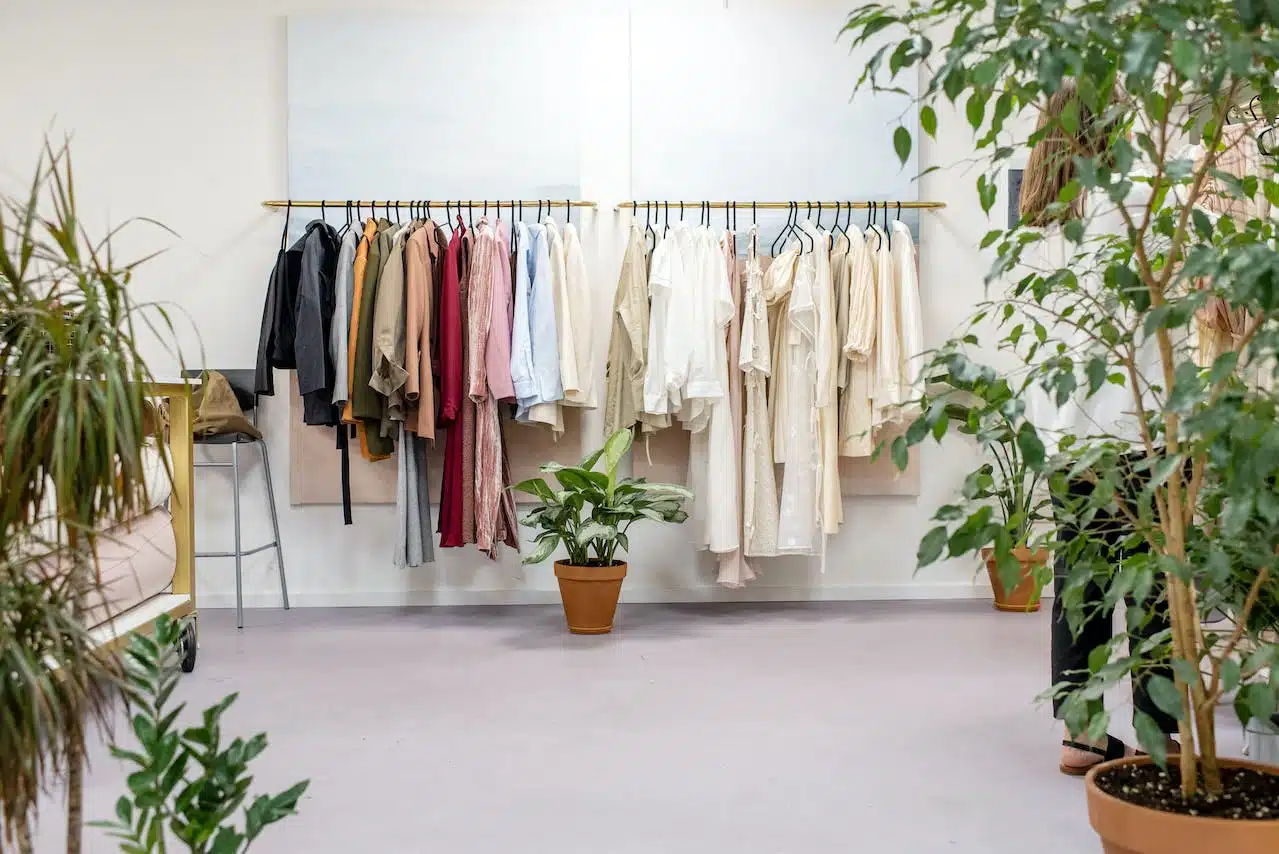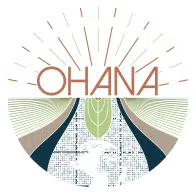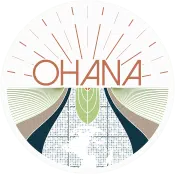
What’s New in the EU’s Sustainable Textile Strategy Consultation?
Note: read our latest article on the EU Textile strategy updates
The EU strategy for sustainable textiles will be adopted by the end of 2021 – and that means major changes for the fashion industry.
Organizations have already had a chance to give their initial opinions on the strategy roadmap, but now, the EU Commission has opened a new consultation period for companies to have their say, until 04th August 2021.
A strong strategy for sustainable textiles will contribute to meeting the EU’s climate goals and achieving its European Green Deal objectives. But the strategy can also help companies to meet their business goals and stay competitive in a market with scarce natural resources and increased consumer demand for eco-friendly products..
The EU strategy for sustainable textiles is an opportunity for clothing and textile firms to innovate and lead the way towards a sustainable Europe.
That’s why it’s vitally important that textile companies are up to speed on the new consultation – to get prepared for the policy changes about to shake up their industry, and to tell the EU what they need to stay competitive and accelerate sustainability before the final policies come into play.
Want someone with deep experience and connections in the EU to help guide your sustainability strategy? Get in touch!
A strategy for sustainable textiles is long overdue
Textile and fashion companies in the EU account for a whopping €162 billion in annual turnover, and provide over 1,500,000 jobs, according to Euratex. The textile industry is a pillar of the EU’s economy and a key focus in its recovery plan for Europe, which aims to support organisations in addressing the impacts of the Covid-19 pandemic.
But economic recovery can’t come at the expense of the environment. The EU has estimated that the fashion industry is responsible for around 10% of global carbon emissions, making it a priority sector for increased environmental regulation. Add that to declining levels of natural resources, social challenges in the value chains and booming consumer demand for sustainable clothing – and it’s clear that the EU’s strategy for sustainable textiles is deeply necessary from both a business and sustainability standpoint.
Until now, the textile sector has lacked clear sustainability targets and regulations. The new strategy aims to offer the clarity, support, and a policy action plan that will push fashion towards a strong and sustainable recovery.
The sustainable textiles strategy in a nutshell
The strategy fits in with several other EU initiatives on sustainability and consumer transparency, including the Circular Economy Action Plan (CEAP), the Sustainable Product Initiative (SPI), and the New Consumer Agenda.
Key topics that will be addressed are as follows:
- Establishing ecodesign for textiles and incentivising circular business models.
- Enabling better recycling of materials and improved production processes.
- Ensuring increased transparency for consumers across the value chain.
- Managing value chain risks through due diligence on social impacts including labour conditions.
- Better management of production and post-consumer textile waste.
Use the feedback period to get your voice heard
The Commission’s draft roadmap published in January 2021 set out a rough framework of what the strategy would look like. They subsequently ran a call for feedback ending in February, during which hundreds of organizations gave their opinions and made their needs known. We wrote about the textile strategy state of affairs during this period.
Now, the EU has opened a public consultation from 12th May 2021-04th August 2021. Organizations will give feedback through a detailed online questionnaire, to which extra documents – like charts or position papers – can be attached.
This is a key moment for companies and other stakeholders to offer their thoughts before the strategy is finalised and adopted. The consultation also gives us a view into the EU Commission’s latest thinking on the strategy, which allows organizations to give effective feedback and gear up for the changes.
Key points from the sustainable textiles strategy consultation
As expected, the consultation aligns with the upcoming Sustainable Product Initiative and New Consumer Agenda, which emphasise circularity, product transparency, and empowering consumers. There’s a strong emphasis on boosting the resilience of the textiles industry through sustainability, which is welcome news.
Here’s our breakdown of the main topics:
A circular economy for textiles
The consultation focuses on realising circularity across the entire value chain. Several of the questions ask stakeholders to outline their priorities in circular textiles and the tools and technologies they need to go circular at every stage of design, production, and product aftercare.
There’s a focus on incentivising circular business models like product-as-a-service models as well as circularity through product design, with an emphasis on planning for reuse, repair, easy disassembly, and recycling of products and materials.
In terms of circular materials and production processes, the consultation suggests more granular levels of differentiation between materials like clothing, technical, and home textiles to effectively develop the right policies. It suggests the need to use more natural and sustainably grown fibres. There are also specific suggestions on reducing microplastics by using less synthetic fibres and developing technologies that reduce fibre shedding and separate microplastics from other waste.
Consumer empowerment and transparency
Anticipating upcoming legislation on product transparency and green claims, the consultation emphasises the role of consumers.
There’s a focus on understanding how the EU can incentivise and promote sustainable consumption behaviour, through initiatives like EU-wide awareness campaigns and platforms or possible economic incentives for repairing textiles or buying sustainable products. The EU Commission is also suggesting to tackle over-consumption in the sector and transition to more “slow fashion” models.
The consultation also has a strong emphasis on increasing the reliability and transparency of information available to consumers. Several questions suggest measures like digital product passports and tagging as well as stronger protection of consumers against false green claims.
Textile waste management and material recirculation
Overall, the consultation offers a strong vision for waste management and textile recycling. There are plenty of opportunities to give opinions on the most effective technologies for scalable material recirculation, and the Commission affirms the need to increase price competitiveness for recycled textiles through taxes or other economic incentives.
The consultation recognises the need for clear definitions and classification categories for waste and recyclable materials, including end-of-waste criteria. It offers a useful definition of product’s recyclability as involving “ease of disassembly, reduced fibre blends, avoidance of chemicals that hamper recycling, and information on material and chemical content”.
Social sustainability and due diligence
This latest consultation proposes to develop specific due-diligence guidance for textile companies, asking stakeholders to comment specifically on social sustainability factors like fair wages, decent working conditions, and labour and human rights. It suggests the inclusion of these social aspects across harmonised EU certifications, including eco-labelling and green public procurement criteria., as per the UN’s guiding Principles for Business and Human Rights.
This is in line with civil society’s calls for needed policy action on unfair trade legislation regarding purchasing practices, as well as increased supply chain transparency.
To build a resilient and sustainable industry, the EU Commission also needs to hear feedback on what kind of skills will be needed in this revised textile value chain – which will help to provide appropriate training and keep jobs in the EU.
Managing responsibilities in global value chains
Given that the textile and fashion industry is a global sector, the consultation highlights the need for adopting measures to manage both environmental and social risks in the international operations of the textile industry.
It suggests adopting measures requiring textile products imported into the EU to meet sustainability standards, including customs controls and tracing technologies.
There’s also an emphasis on the responsibilities that EU companies bear when shipping textile waste to third countries to guarantee that the receiving country manages textile waste shipments in an environmentally sound way.
Get involved – have your say in the sustainable textiles consultation
The EU’s strategy for sustainable textiles will change how the sector operates at every stage of the value chain, from circular product design to sustainable materials processing, consumer transparency, and the recirculation of waste materials.
But the strategy hasn’t yet been adopted. There’s still time for organisations to shape the final policy and tell the EU what they need to lead the way on sustainability. Organizations should participate in the European Commission consultation but also continue to engage with the strategy through other EU institutions like the Parliament and Council afterwards.
By participating in the sustainable textile strategy consultation and engaging with the EU more broadly, stakeholders can help to create a transformative framework that benefits the textile industry and the environment alike.
Want someone with deep experience and connections in the EU to help guide your sustainability strategy? Get in touch!
Join our newsletter to keep up to date with the latest news and information coming out of the EU.
What’s New in the EU’s Sustainable Textile Strategy Consultation?
Note: read our latest article on the EU Textile strategy updates
The EU strategy for sustainable textiles will be adopted by the end of 2021 – and that means major changes for the fashion industry.
Organizations have already had a chance to give their initial opinions on the strategy roadmap, but now, the EU Commission has opened a new consultation period for companies to have their say, until 04th August 2021.
A strong strategy for sustainable textiles will contribute to meeting the EU’s climate goals and achieving its European Green Deal objectives. But the strategy can also help companies to meet their business goals and stay competitive in a market with scarce natural resources and increased consumer demand for eco-friendly products..
The EU strategy for sustainable textiles is an opportunity for clothing and textile firms to innovate and lead the way towards a sustainable Europe.
That’s why it’s vitally important that textile companies are up to speed on the new consultation – to get prepared for the policy changes about to shake up their industry, and to tell the EU what they need to stay competitive and accelerate sustainability before the final policies come into play.
Want someone with deep experience and connections in the EU to help guide your sustainability strategy? Get in touch!
A strategy for sustainable textiles is long overdue
Textile and fashion companies in the EU account for a whopping €162 billion in annual turnover, and provide over 1,500,000 jobs, according to Euratex. The textile industry is a pillar of the EU’s economy and a key focus in its recovery plan for Europe, which aims to support organisations in addressing the impacts of the Covid-19 pandemic.
But economic recovery can’t come at the expense of the environment. The EU has estimated that the fashion industry is responsible for around 10% of global carbon emissions, making it a priority sector for increased environmental regulation. Add that to declining levels of natural resources, social challenges in the value chains and booming consumer demand for sustainable clothing – and it’s clear that the EU’s strategy for sustainable textiles is deeply necessary from both a business and sustainability standpoint.
Until now, the textile sector has lacked clear sustainability targets and regulations. The new strategy aims to offer the clarity, support, and a policy action plan that will push fashion towards a strong and sustainable recovery.
The sustainable textiles strategy in a nutshell
The strategy fits in with several other EU initiatives on sustainability and consumer transparency, including the Circular Economy Action Plan (CEAP), the Sustainable Product Initiative (SPI), and the New Consumer Agenda.
Key topics that will be addressed are as follows:
- Establishing ecodesign for textiles and incentivising circular business models.
- Enabling better recycling of materials and improved production processes.
- Ensuring increased transparency for consumers across the value chain.
- Managing value chain risks through due diligence on social impacts including labour conditions.
- Better management of production and post-consumer textile waste.
Use the feedback period to get your voice heard
The Commission’s draft roadmap published in January 2021 set out a rough framework of what the strategy would look like. They subsequently ran a call for feedback ending in February, during which hundreds of organizations gave their opinions and made their needs known. We wrote about the textile strategy state of affairs during this period.
Now, the EU has opened a public consultation from 12th May 2021-04th August 2021. Organizations will give feedback through a detailed online questionnaire, to which extra documents – like charts or position papers – can be attached.
This is a key moment for companies and other stakeholders to offer their thoughts before the strategy is finalised and adopted. The consultation also gives us a view into the EU Commission’s latest thinking on the strategy, which allows organizations to give effective feedback and gear up for the changes.
Key points from the sustainable textiles strategy consultation
As expected, the consultation aligns with the upcoming Sustainable Product Initiative and New Consumer Agenda, which emphasise circularity, product transparency, and empowering consumers. There’s a strong emphasis on boosting the resilience of the textiles industry through sustainability, which is welcome news.
Here’s our breakdown of the main topics:
A circular economy for textiles
The consultation focuses on realising circularity across the entire value chain. Several of the questions ask stakeholders to outline their priorities in circular textiles and the tools and technologies they need to go circular at every stage of design, production, and product aftercare.
There’s a focus on incentivising circular business models like product-as-a-service models as well as circularity through product design, with an emphasis on planning for reuse, repair, easy disassembly, and recycling of products and materials.
In terms of circular materials and production processes, the consultation suggests more granular levels of differentiation between materials like clothing, technical, and home textiles to effectively develop the right policies. It suggests the need to use more natural and sustainably grown fibres. There are also specific suggestions on reducing microplastics by using less synthetic fibres and developing technologies that reduce fibre shedding and separate microplastics from other waste.
Consumer empowerment and transparency
Anticipating upcoming legislation on product transparency and green claims, the consultation emphasises the role of consumers.
There’s a focus on understanding how the EU can incentivise and promote sustainable consumption behaviour, through initiatives like EU-wide awareness campaigns and platforms or possible economic incentives for repairing textiles or buying sustainable products. The EU Commission is also suggesting to tackle over-consumption in the sector and transition to more “slow fashion” models.
The consultation also has a strong emphasis on increasing the reliability and transparency of information available to consumers. Several questions suggest measures like digital product passports and tagging as well as stronger protection of consumers against false green claims.
Textile waste management and material recirculation
Overall, the consultation offers a strong vision for waste management and textile recycling. There are plenty of opportunities to give opinions on the most effective technologies for scalable material recirculation, and the Commission affirms the need to increase price competitiveness for recycled textiles through taxes or other economic incentives.
The consultation recognises the need for clear definitions and classification categories for waste and recyclable materials, including end-of-waste criteria. It offers a useful definition of product’s recyclability as involving “ease of disassembly, reduced fibre blends, avoidance of chemicals that hamper recycling, and information on material and chemical content”.
Social sustainability and due diligence
This latest consultation proposes to develop specific due-diligence guidance for textile companies, asking stakeholders to comment specifically on social sustainability factors like fair wages, decent working conditions, and labour and human rights. It suggests the inclusion of these social aspects across harmonised EU certifications, including eco-labelling and green public procurement criteria., as per the UN’s guiding Principles for Business and Human Rights.
This is in line with civil society’s calls for needed policy action on unfair trade legislation regarding purchasing practices, as well as increased supply chain transparency.
To build a resilient and sustainable industry, the EU Commission also needs to hear feedback on what kind of skills will be needed in this revised textile value chain – which will help to provide appropriate training and keep jobs in the EU.
Managing responsibilities in global value chains
Given that the textile and fashion industry is a global sector, the consultation highlights the need for adopting measures to manage both environmental and social risks in the international operations of the textile industry.
It suggests adopting measures requiring textile products imported into the EU to meet sustainability standards, including customs controls and tracing technologies.
There’s also an emphasis on the responsibilities that EU companies bear when shipping textile waste to third countries to guarantee that the receiving country manages textile waste shipments in an environmentally sound way.
Get involved – have your say in the sustainable textiles consultation
The EU’s strategy for sustainable textiles will change how the sector operates at every stage of the value chain, from circular product design to sustainable materials processing, consumer transparency, and the recirculation of waste materials.
But the strategy hasn’t yet been adopted. There’s still time for organisations to shape the final policy and tell the EU what they need to lead the way on sustainability. Organizations should participate in the European Commission consultation but also continue to engage with the strategy through other EU institutions like the Parliament and Council afterwards.
By participating in the sustainable textile strategy consultation and engaging with the EU more broadly, stakeholders can help to create a transformative framework that benefits the textile industry and the environment alike.
Want someone with deep experience and connections in the EU to help guide your sustainability strategy? Get in touch!
Join our newsletter to keep up to date with the latest news and information coming out of the EU.


